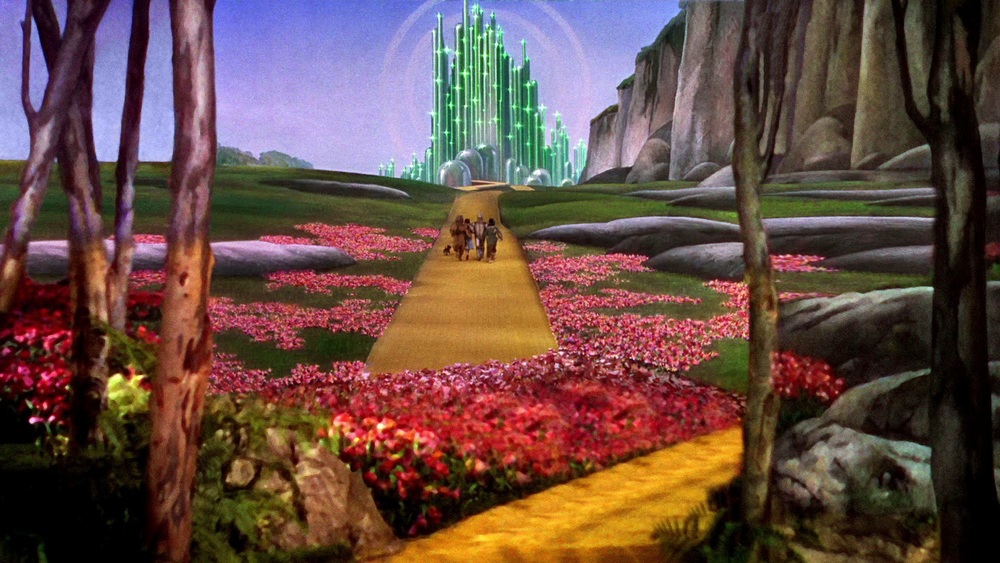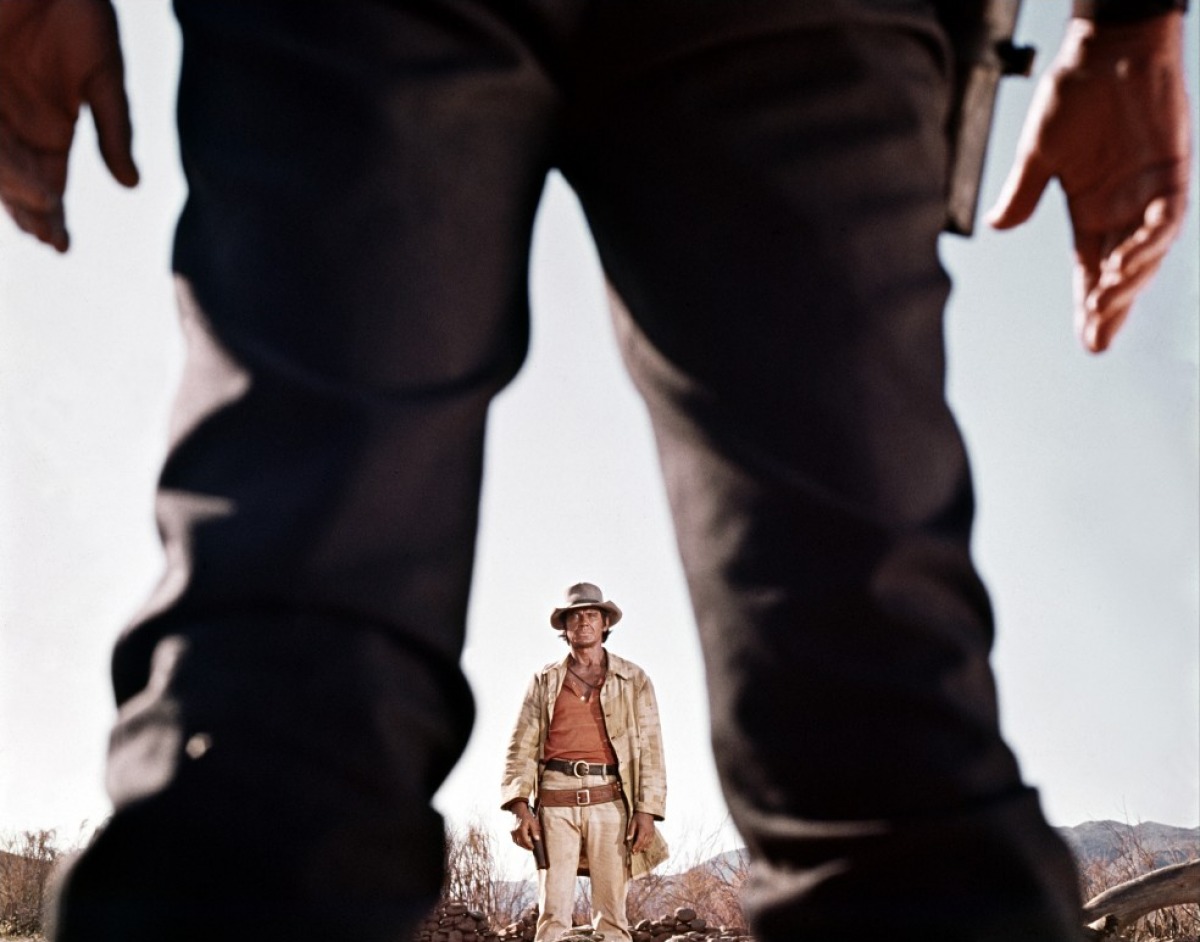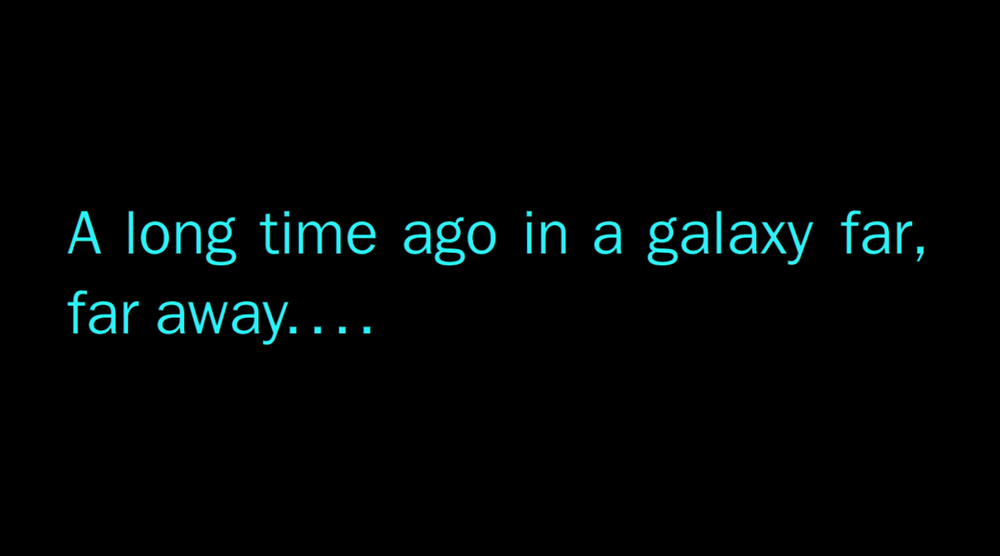Opening his now classic book The Wonderful Wizard of Oz, L. Frank Baum on fairytales:
Folklore, legends, myths and fairy tales have followed childhood through the ages, for every healthy youngster has a wholesome and instinctive love for stories fantastic, marvelous and manifestly unreal. The winged fairies of Grimm and Andersen have brought more happiness to childish hearts than all other human creations.
Yet the old time fairy tale, having served for generations, may now be classed as “historical” in the children’s library; for the time has come for a series of newer “wonder tales” in which the stereotyped genie, dwarf and fairy are eliminated, together with all the horrible and blood-curdling incidents devised by their authors to point a fearsome moral to each tale. Modern education includes morality; therefore the modern child seeks only entertainment in its wonder tales and gladly dispenses with all disagreeable incident.
Having this thought in mind, the story of “The Wonderful Wizard of Oz” was written solely to please children of today. It aspires to being a modernized fairy tale, in which the wonderment and joy are retained and the heartaches and nightmares are left out.
L. Frank Baum
Chicago, April, 1900.
L. Frank Baum’s book had been a tremendous success when it was first released, and he eventually followed it up with no less than thirteen sequels (and other authors would go on to write many, many more). And while the MGM movie from 1939 wasn’t an immediate success (it had steep competition in a year which is often considered the best year ever for film, and which Peter Bogdanovich called “extraordinarily vigorous’, including from Gone With the Wind, a great influence on The Empire Strikes Back). It would however go on to great success through its annual telecast (of which you can read much, much more on Wikipedia), becoming a staple of American culture and homes.
It’s no surprise then, that when Lucas set out to make his own children’s fairytale, that he would turn to what is arguably the American fairytale, for inspiration. And Star Wars would indeed come along and take on the role as a quintessentially American fairytale, in a similar fashion to how The Wizard of Oz had done it many years earlier. Hardly accidental, Lucas had obviously done his homework, and knew exactly how he wanted to target his film: For the whole family.
But despite the fact that the two films differ in more ways than they are similar, enough comparisons between the two were made even early on, to make Lucas irritated:
“Now people look at Star Wars, and they say. ‘Oh, that’s simple — there’s nothing to it.’ They say it’s like this movie or that movie. But the truth is, it isn’t like any other movie. People have a tendency to think that it was just a formula — ‘Oh, he just took The Wizard of Oz and turned it inside out.’ But if you look at those two movies, they are totally different ideas. I mean, you can see certain similarities between almost any two movies. But coming up with a basic idea and developing it and making it work is very difficult and not to be underestimated.”[p102, 1]
While Lucas has a point, especially given the somewhat tenuous connections often made between Star Wars and anything imaginable, the relationship between Star Wars and The Wizard of Oz is seemingly strong enough that it’s hard to imagine it not having played a pivotal role in Lucas’s thinking about his ‘little children’s movie’.
This is hardly a novel notion. In fact, Conrad Kottak, from the discussion on fairytales, found much joy in writing about Star Wars, having done it not only in the afore discussed 1978 essay Star Wars: Social Science Fiction, but also in a 1982 essay called Star Wars and The Wizard of Oz: Structural and Psychological Analysis of Popular American Fantasy Films[2] in which he made the case for how “Star Wars is a ‘systematic structural transformation’ of The Wizard of Oz”.
Using ideas from noted French anthropologist Claude Lévi-Strauss and Bruno Bettelheim, he dissects the two movies and their place in modern culture, how fairy tales throughout the ages would draw on what had come before and use reversals and transformations to create something new entirely, as well as how Star Wars used The Wizard of Oz in the same manner, and how The Empire Strikes Back in fact did the very same, reversing, or negating, Star Wars itself (and of course how Return of the Jedi plays into this evolution).
Before discussing how Star Wars might have drawn influence from something like The Wizard of Oz, it’s worth making a note of Kottak’s opening argument:
Lévi-Strauss starts with the fact that human beings find meaning in the world by making binary oppositions. This is the most fundamental operation of the human mind according to many thinkers.
[…]
Computers work on a binary principle: off/on. And the human mind functions in a similar way, because many linguists think, meaning is always relational. What does the term “rich” mean? Nothing, unless there is “poor.” Thus the mind always searches out oppositions, for any topic, to make sense.[2]
Kottak’s means to use this argument to set up his essay on reversals of characters and meaning between The Wizard of Oz and Star Wars, as well as its sequels, but it also functions as a warning to take comparisons like the one I’m making too far. After all, it’s possible to argue the similarities between many things that have none intended. Many times such similarities are simply born out of the ‘binary oppositions’, which can dictate how something must be structured. After all, for us to have a good guy, it helps if we have a bad guy. Or indeed in the case of the lifelong woman’s rights advocate Frank L. Baum’s The Wonderful Wizard of Oz, a good girl and wicked witch.
While carried by movie-vernacular of different generations, Dorothy’s ‘Somewhere Over the Rainbow’ and Luke’s binary sunset moment occupy the same spiritual space and represent the exact same longing in the hearts of the two protagonists. But their relationship goes much further than a single moment of longing.
Both Dorothy and Luke live with their respective aunt and uncle, whom their have a similar relationship with, on a farm in a desert-like landscape, Tatooine for Luke and drought-ridden Kansas for Dorothy. They’re both young, idealistic and filled with wanderlust, expressed by Dorothy in ‘Somewhere Over the Rainbow’, and in Luke’s longing glance at the binary sunset. Both have farm hands—Hunk, Zeke, and Hickory for Oz and C–3PO and R2-D2 for Star Wars—that go on to follow them on their subsequent adventure. Both are swept into the wider world when calamity strikes, for Dorothy a tornado, and for Luke the empire’s patrols, and soon after they find themselves on an path that’ll change their lives and the lives of whole worlds, forever.
It’s easy to take these kinds of comparisons too far, but at the same time it’s hard not to see the similarities between The Cowardly Lion and Chewbacca, The Tin Woodsman and C–3PO (both enjoy some oil for their joints) and the unintelligible Toto and R2-D2 (Two-Two). And where Dorothy follows Toto when he runs away, Luke follows R2. In fact, Lucas often talks about how he took facets of Luke’s personality and made them into characters, and that that’s how he came up with Luke’s friends and companions. Take one quick look at The Wizard of Oz, and you’ll find the exact same pattern in Dorothy’s companions of Toto, The Scarecrow, The Tin Woodsman and The Cowardly Lion. Dorothy and Luke’s last names are even conceptually similar, descriptive and evocative, rather than plain old boring ‘Smith’; Dorothy Gale, whose life is changed by a tornado, and Luke Skywalker, whose destiny lies in the stars.
There are many other similarities, though it’s worth keeping in mind that many of them could just as easily have been drawn from general fairytale culture or simply from zeitgeist, such as the Jawa and Munchkin resemblance, or how when Obi-Wan is slain by Vader, leaving behind only his empty robes, it echoes how The Wicked Witch of the West disappears, leaving behind only her robes, when Dorothy accidentally throws a bucket of water on her.
From this should of course be understood on the one hand, that yes Star Wars owes a depth of gratitude to The Wizard of Oz. But more so than that, we should reiterate on the idea that much of the staying power of Star Wars comes exactly from this use of existing, powerful structures, and the skill with which Lucas handpicked them and put them to use in his crazy space-fantasy. Simple concepts which anyone half-proficient in family and children’s films could rattle off at the drop of a hat today, were not as ingrained in storytelling when Lucas set out to make Star Wars, and so while it’s easy to think that the theme of an adolescent looking to the horizon, wondering about what lies beyond everyday life, only for him or her to be swept away on an incredible outlandish adventure, and how said ensuing adventure is representative of life’s many obstacles, might seem entirely obvious; it is arguably so because Star Wars made it so.
That may be considered by some a controversial argument, after all it’s not as if other adventures, fairy tales and fantasy stories haven’t used structures similar in some, or even many respects, to these basic basic ideas. But I dare argue that most of the stories which did so, were of literary origin. That is to say, they started life either as folk tales, or as books, not as movies. This goes for most of Disney’s fairy tales, many of which started life as exactly that, and which used a similarly ‘monomythical’ structure. Or indeed Lord of the Rings (though it’s worth remembering that in the books, Bilbo was not an adolescent, as he was in the movies).
But when it came to movies, it was not as common a device as it would become in the wake of Star Wars. However it didn’t take long for Hollywood to regroup and use this adolescent ‘hook’ to draw in an audience it had otherwise not been able to capture for many years at that time. They were films tailored uniquely for the children and teen market. The young kid/childish man, often parentless, who struggles against an evil power, usually in a fantastic setting, and finally overcomes with the help from his friends. See Flash Gordon (1980), Clash of the Titans (1981), The Dark Crystal (1982), Tron (1982), The Last Starfighter (1984), Back to the Future (1985), Explorers (1985), The Goonies (1985), The Flight of the Navigator (1986), Labyrinth (1986), SpaceCamp (1986) and so on, and so forth. Star Wars certainly didn’t invent the hero’s journey, but because of how it popularized it, with some help from Spielberg-fare like E.T., it might as well have.
So Star Wars owes much to The Wizard of Oz, but the two fairy tales also diverge in many ways, one of which is crucial and which more than anything else tells the story of their differing generations, and perhaps the impact that Vietnam and things like Watergate had on the United States in the meantime.
At the end of her adventures through Oz and the vanquishing of the Wicked Witch, Dorothy learns that she had the power to return home all along, and when she does, it’s to the farm and her family. Perhaps her time in Oz was merely a dream? Whatever the case, the consequences are for all intents and purposes internal; the world keeps on turning, and Dorothy returns to her life once again.
At the end of Luke’s adventures, the rebels win a major battle against the empire, and Luke has gained new friends and he learned that he had the power of the force inside of him all along. But regardless, it’s a hard won victory. Darth Vader is still alive, his aunt and uncle remain dead and the homestead destroyed, leaving Luke without a home (and in fact he never again returns to it or his family’s graves, even when he’s on Tatooine to rescue Han). It’s a fairy tale, but one in which actions bear consequences, which made it relatable to modern audiences, and gave its story a weight which made it relatable not only to children, but to people of all ages.
Now, keeping in mind that we’re discussing only how the first movie was conceptualized; not how the subsequent films were put together. And given that, and the clear similarities we’ve arguably established between Star Warsand The Wizard of Oz, and with the caveat that none of the influences that helped shape Star Wars did so in a whole-sale way, does it seem more reasonable to assume that Lucas found the fairytale structure he was looking for Joseph Campbell’s 400+ page The Hero With a Thousand Faces, or in America’s very own, most beloved fairytale, which had seen endless TV reruns when he was growing up?





